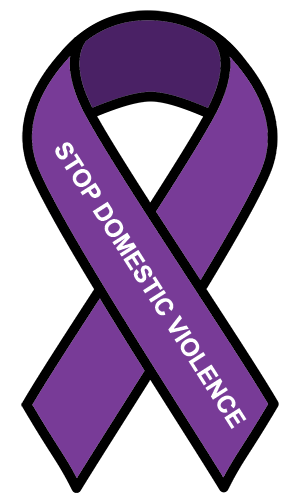Domestic Violence
October is Dating/Domestic Violence Awareness Month
 Domestic Violence Awareness month is held each October as a way to unite efforts to
end domestic violence. Please take time this month to learn about Dating and Domestic
Violence and participate in the activities available at LSCPA and online.
Domestic Violence Awareness month is held each October as a way to unite efforts to
end domestic violence. Please take time this month to learn about Dating and Domestic
Violence and participate in the activities available at LSCPA and online.
DVAM Awareness Activities at LSCPA
- Tuesday, 10/01/2024 - Domestic Violence Awareness Month: Tacobout Tuesday
- Student Center Room 111
12pm - 1pm -
Presentation by Bonnie SpottsCommunity Relations DirectorFamily Services of Southeast Texas3550 Fannin St, Beaumont, TX 77701409-833-2668 Ext. 110 FAX 409-838-2540
- Student Center Room 111
DVAM Awareness State and National Events
- Thursday, 10/19/2023 - Purple Thursday
DVAM Awareness on Social Media
The following hashtags will be used this month by people trying to raise awareness about Domestic Violence, including by sharing their own stories.
- #DVAM
- #WeAreResilient
- #HealHoldCenter
- #LoveShouldntHurt
- #Every1KnowsSome1
- #StandAgainstDV
- #PledgePurple
About Dating/Domestic Violence
Dating Violence and Domestic Violence (also known as Intimate Partner Violence or Relationship Violence) occurs when there is abuse in a relationship. It's not just physical abuse. It also includes other abusive and controlling behaviors used by one partner to maintain power and control over the other partner, such as:
- Emotional and verbal abuse - insulting and calling a partner names, constantly criticizing, isolating a partner from family and friends, monitoring a partner's activities, humiliating a partner, threatening a partner, damaging a partner's belongings, blaming a partner for the abusive behavior, or gaslighting a partner by pretending not to understand, questioning facts, and denying statements or actions.
- Financial abuse - using money to control a partner.
- Sexual abuse - forcing a partner to engage in non-consensual sexual activity.
- Digital abuse - using technology and the internet to bully, harass, stalk, intimidate, or control a partner.
Abuse can occur at any stage of a relationship.
People of all ages, races, genders, sexuality, religion, education level, or income level can be victims or perpetrators of abuse.
- 1 in 3 women and 1 in 4 men in the US will experience rape, physical violence and/or stalking by an intimate partner.
- 1 in 4 women and 1 in 7 men in the US have been the victim of severe physical violence by an intimate partner in their lifetime.
- Almost half of all people in the US have experienced psychological aggression by an intimate partner in their lifetime.
- 81% of women and 35% of men who experienced rape, stalking, or physical violence from an intimate partner reported significant impacts like injuries or symptoms of post-traumatic stress disorder (PTSD).
- 12 million people per year are affected by intimate partner violence - that's an average of 24 people per minute.
- 1 in 10 high school students have experienced physical violence from a partner in the past year.
- 43% of dating college women report experiencing violent and abusive dating behaviors, including physical, sexual, digital, verbal, or other controlling abuse.
Anyone can be an abuser. The majority are not violent outside the home, and 90% don't have criminal records.
Traits of an Abuser
- Denies the existence or minimizes the seriousness of the violence and its effect on the victim and other family members.
- Objectifies the victim and often sees them as their property or sexual objects.
- Has low self-esteem and feels powerless and ineffective in the world.
- They may appear successful, but internally, they feel inadequate.
- Externalizes the causes of their behavior.
- They blame their violence on circumstances such as stress, their partner's behavior, a "bad day," on alcohol, drugs, or other factors.
- May be pleasant and charming between periods of violence and is often seen as a "nice person" to others outside the relationship.
Warning Signs
- Extreme jealousy
- Possessiveness
- Unpredictability
- A bad temper
- Cruelty to animals
- Verbal abuse
- Extremely controlling behavior
- Antiquated beliefs about roles of women and men in relationships
- Forced sex or disregard of their partner's unwillingness to have sex
- Sabotage of birth control methods or refusal to honor agreed upon methods
- Blaming the victim for anything bad that happens
- Sabotage or obstruction of the victim's ability to work or attend school
- Controls all the finances
- Abuse of other family members, children or pets
- Accusations of the victim flirting with others or having an affair
- Control of what the victim wears and how they act
- Demeaning the victim either privately or publicly
- Embarrassment or humiliation of the victim in front of others
- Harassment of the victim at work
You can help victims of domestic violence by intervening in a safe manner, by offering assistance, and by generally working to create a culture of respect.
- Bystander Basics (NO MORE)
- Friends & Family: How to Help (National Sexual Violence Resource Center)
- Supporting Others (National Domestic Violence Hotline)
National Resources
- National Domestic Violence Hotline (English and Español)
- National Sexual Assault Hotline (English and Español)
- Love is Respect (English and Español)
